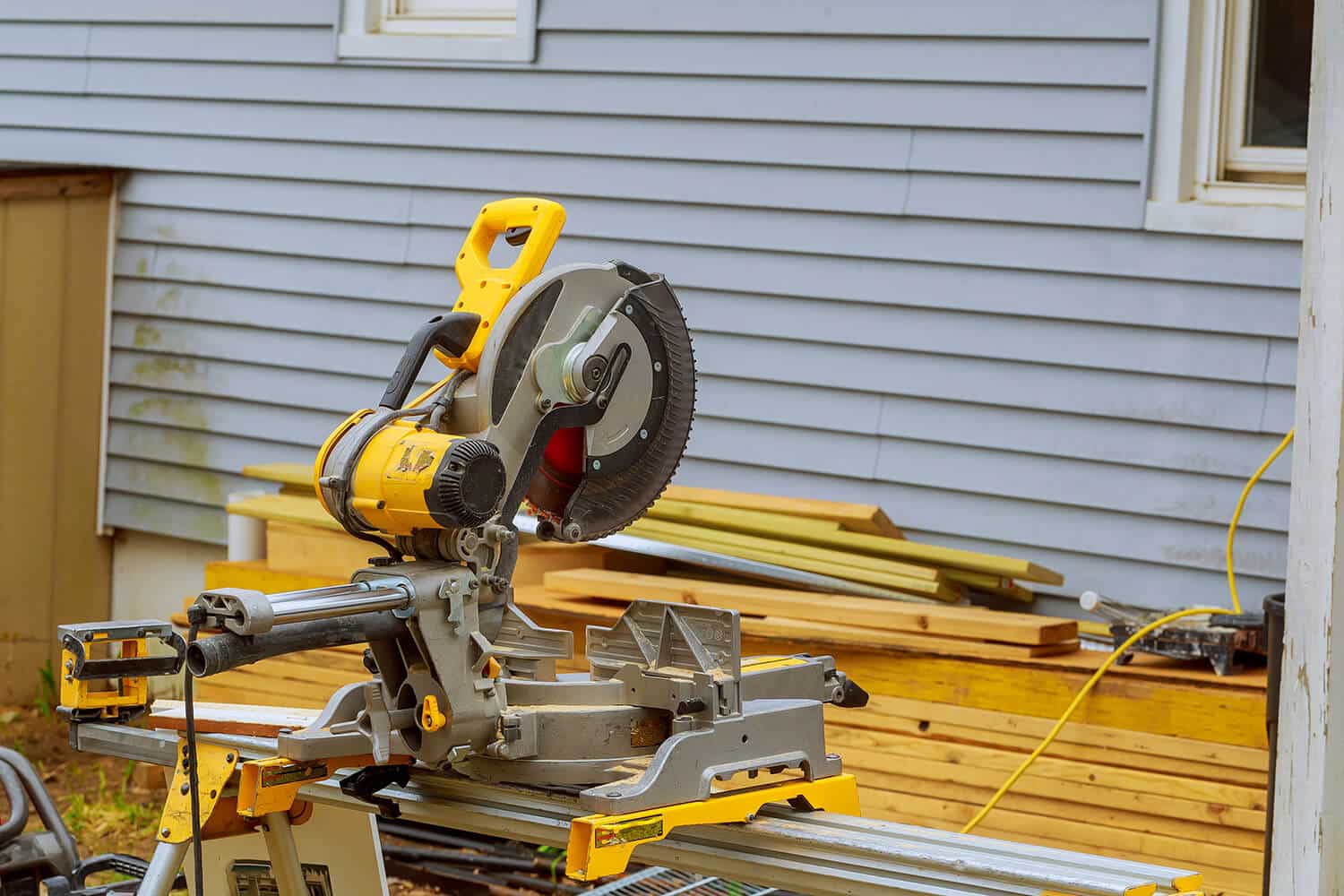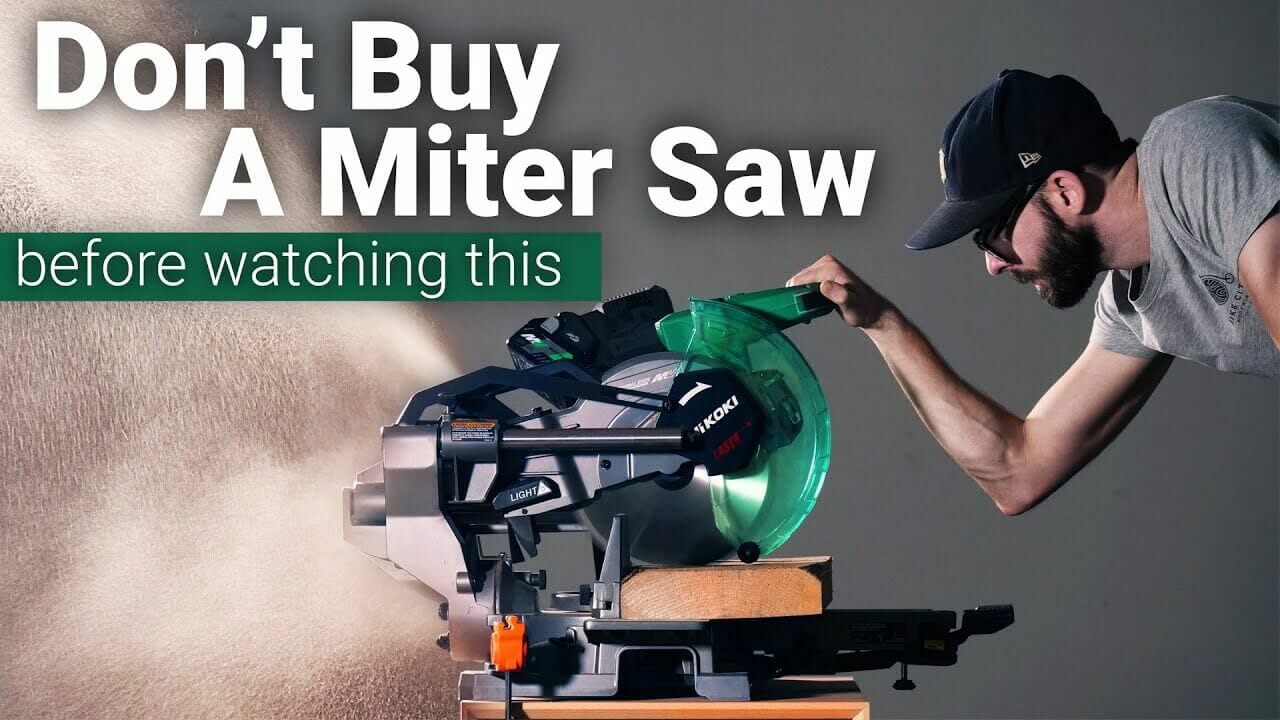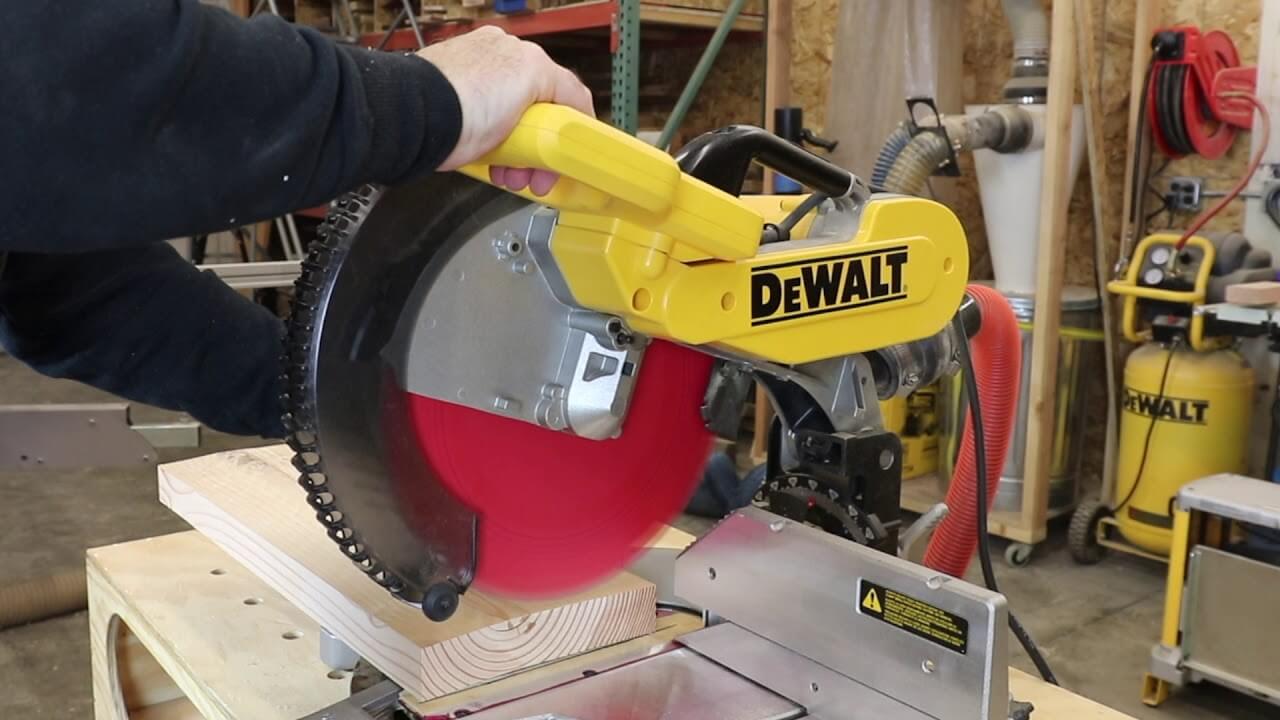What Is The Difference Between A Compound And Sliding Miter Saw?
Standard miter saws, dual bevel compound miter saws, and sliding compound miter saws, all come from the same family of miter saws.
But how does a sliding vs compound miter saw compare, and which one is right for you in this part of your woodworking journey?
And are there any major underlying differences between these two high-powered and high-priced saws?
Yes, there are most certainly indifferences that you need to decipher before making either of these saws an addition to your prized tool collection.
The Miter Saw
Before we get into the special kinds of miter saws, let’s take a look at the basic miter saw first before we start comparing a single bevel vs dual bevel miter saw and whatnot.
A standard miter saw (also known as a compound miter saw) is designed to make angled crosscuts. Some basic miter saws let you choose the angle of this cut, whereas others come with pre-set angles, such as 15, 30, and 45 degrees.
All you have to do here, once the angle has been chosen, is to hold the wood or workpiece against the fence so it is stable, and then pull the circular blade down and through the material.
A basic miter saw is a good option to go with if you are cutting materials of limited width, anywhere under 8 inches, plus it’s a good option if you have thicker materials, as there are no sliding rails to get in the way.
Let’s move on and take a closer look at the compound miter saw, and break down some other types of miter saws, including what size miter saw you should consider buying.
The Compound Miter Saw
Now, what you do need to know here is that although the miter saw and the compound miter saw share the same name, the compound version is really a different machine altogether, and it comes with an added feature that helps make it much more versatile than the basic version.
The compound miter saw comes with a pivoting arm that can be tilted to angles other than 90 degrees. What this means is that the compound miter saw can make the basic miter cuts, as well as bevel cuts too. It’s a big deal depending on the task you are looking to accomplish.
You might be wondering what the difference between a miter cut and a bevel cut is. Well, a miter cut is meant for joining several pieces of wood together. This is what you would use to create the angled corners on four pieces of wood when creating a picture frame.
A miter cut is actually angled through the horizontal plane of the wood, whereas the bevel cut is angled through the vertical plane. A bevel cut goes through the face of the material, so from top to bottom, not side to side.
Therefore, when it comes to compound miter saws, they have a lot more versatility in terms of the number of tasks they can accomplish when compared to a basic miter saw.
So now we have figured out what a basic miter saw is and what a compound miter saw is, but what about a sliding miter saw? As you might be able to tell by now, a sliding miter saw has even more features that can help make life a bit easier for you.
Just remember that the compound miter saw is ideal for fairly thick materials, but not wide ones, and it’s great for making precise miter and bevel cuts.
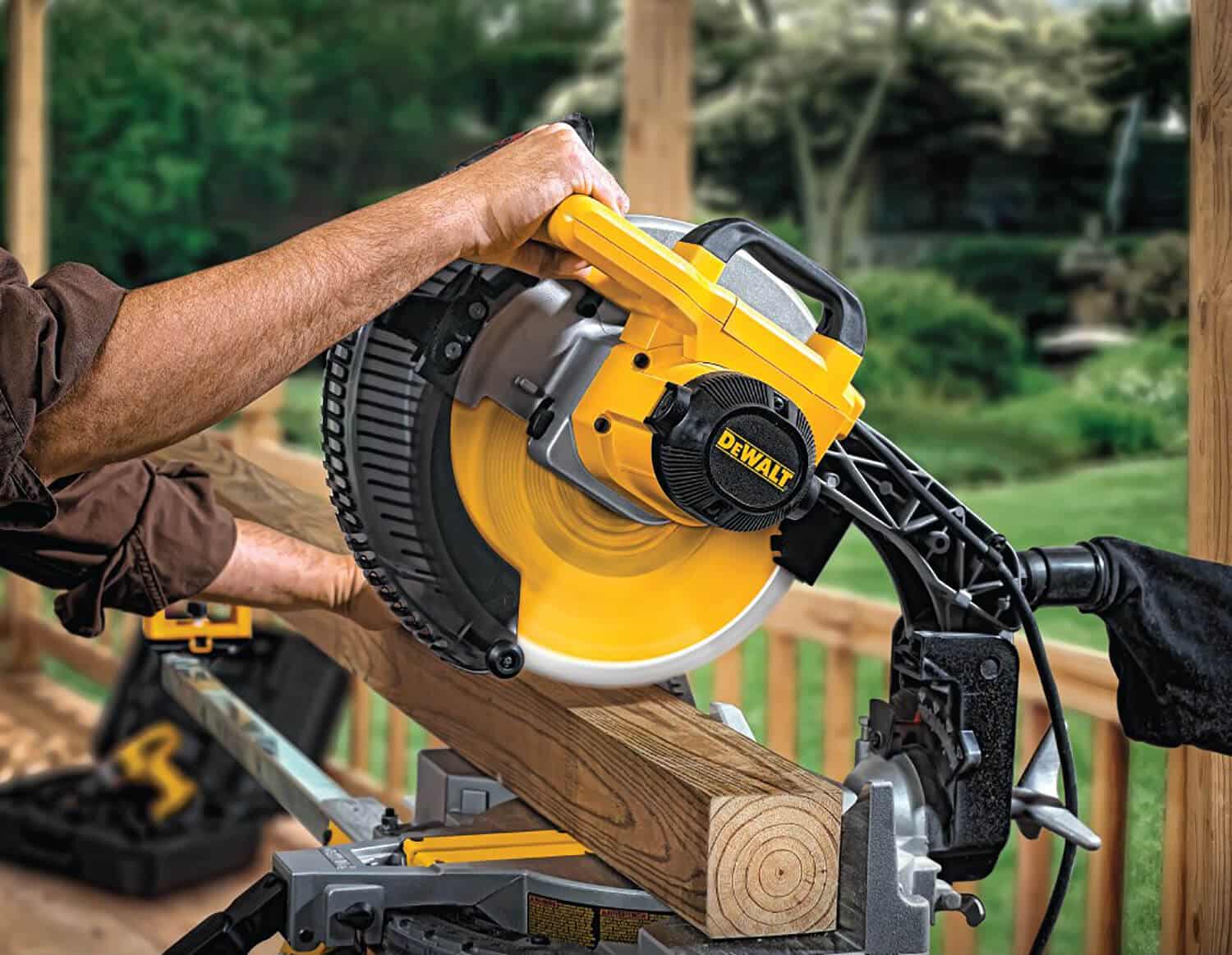
Do I Need a Compound Sliding Miter Saw?
Comparing a sliding compound miter saw to a non-sliding miter saw is like comparing an F22 Raptor to a B52 Bomber. Sure they’re both planes, but their capabilities and applications are very much different.
A non-sliding miter saw is an ideal saw for beginners who won’t be attempting to cut larger pieces of lumber. A non-sliding miter saw be it a single bevel or dual bevel miter saw, can only perform plunge cuts.
Non-sliding miter saws are still very capable miter saws, and you can get a diverse range of jobs done with a standard miter saw, but before you buy one, you have to understand that they have their limits.
For example; if you’re planning on cutting 4×4 posts with a miter saw, you’d be better served to attempt such a cut with a sliding miter saw.
Wheres, a sliding compound miter saw has a greater range of horizontal motion allowing you to cut wider pieces of wood. This makes a sliding compound miter saw the ideal miter saw for crown molding jobs or framing jobs.
There are a number of different sliding compound miter saws available, and all of them function differently in terms of their sliding mechanism.
Here are the two different sliding compound miter saws:
- An axial-glide sliding compound miter saw
- A mounted fixed rail sliding compound miter saw
One of the main benefits a sliding compound miter saw has over a non-sliding miter saw is that when cutting lumber the blade of the sliding miter saw retains less heat. This is because as the blade’s horizontal motion is increased, fewer teeth on the blade are engaged when cutting.
So, sliding miter saws are not only more versatile, but they are also more economical in the long term as you’ll be purchasing fewer blades.
The Sliding Miter Saw
The sliding compound miter saw is in fact fairly similar to the basic miter saw, but with one big added bonus.
The sliding miter saw, just like the compound miter saw, has the ability to make both miter and bevel cuts, but there is something else too, and as you might realize, it has to do with the word “sliding”.
The sliding miter saw features rails that allow the blade to move forward and backward.
This means that the sliding miter saw can handle much wider materials than your basic miter saw or compound miter saw.
A compound miter saw can handle boards as wide as 8 inches, but that’s about it, and if you are cutting wider materials, this will mean that you have to reposition the material halfway through the cut to allow the compound miter saw to get through the full width.
However, the sliding miter saw, because the blade can slide back and forth, can handle materials twice or even three times the width without the user having to reposition the material being cut.
This is the big advantage that you get with the sliding miter saw, that it can handle much larger materials. Sliding miter saws are also excellent for cutting baseboard and crown molding, and if you’re using a dual bevel sliding miter saw to cut baseboard, life will be a lot easier.
Yet, what you do need to think about here is that the sliding miter saw is going to be much more expensive than a compound miter saw, so you do need to consider your budget.
Moreover, a sliding miter saw, due to that sliding feature, also takes up a bit more space than a compound miter saw.
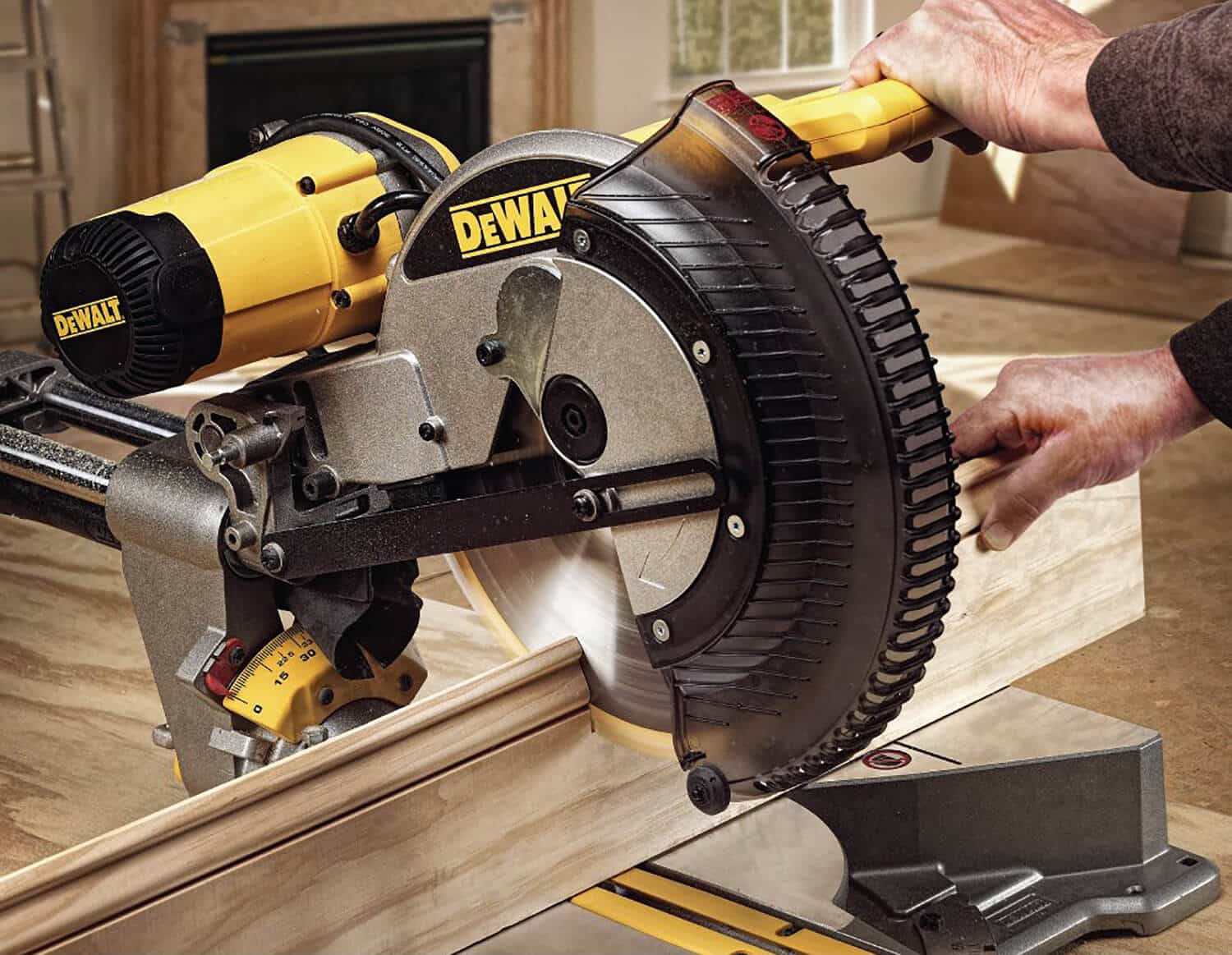
What Is the Best Sliding Compound Miter Saw?
Let’s assume that you’re not looking at spending a fortune here, but still want the best sliding compound miter saw that money can buy.
If that’s the case, I’d recommend you focus your attention on a sliding compound miter saw from DeWalt, like the DeWalt DWS780.
The DeWalt DWS780 has the ability to make complex angled cuts as it’s a dual bevel saw and can rotate left or right with ease.
You’ll have no restrictions when it comes to cutting capacity with the DeWalt DWS780 or DWS779 with its fixed rail sliding mechanism, plus it won’t consume as much space when compared to other saws that make use of an articulating hinge.
Honestly, the DWS780 is a beast of a saw that has every conceivable feature you’d want from a sliding compound miter saw, yet it’s still very reasonably priced.
There are no limits to a sliding compound miter saw like the DWS780 as it will allow you to cut the width of the material at increased depths, plus make bevel cuts and miter cuts accurately.
Although, if you like a more in-depth breakdown of the best sliding compound miter saws of 2022, I’d advise you to check out our most recent round-up review of the best miter saws.
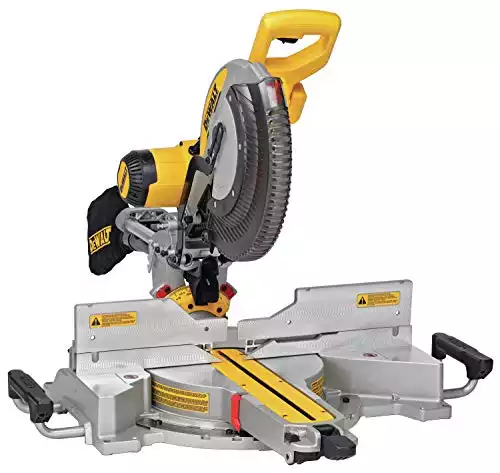 DEWALT DWS780 12-Inch Sliding Compound Miter Saw
DEWALT DWS780 12-Inch Sliding Compound Miter Saw
- Incredibly powerful 15 amp belt-driven motor that generates up to 3800 RPM.
- Superbly crafted stainless steel detent plate with 10 positive stops for increased accuracy.
- Extended sliding fence supports up to 7-1/2" which is beneficial for large projects like; crown molding.
- Includes a high-quality DeWalt 12-inch blade so you're good-to-go right out of the box.
- Swiftly miter right at up to 60° and at 50° to the right, with the push of a button.
In Conclusion
The bottom line is that both compound and sliding miter saws have their uses. You just really have to assess which one of these saws provides the most value for you, and whether or not your job requires all the attributes of a sliding compound miter saw.
If you are cutting smaller materials of a decent thickness, you can purchase a brilliant budget compound miter saw that will have great results for years to come.
Although if you plan on scaling up and have some more serious future DIY projects planned, like crown molding, buying a sliding compound miter saw might be the better option as you’ll be able to slice through a wide range of materials with ease.

